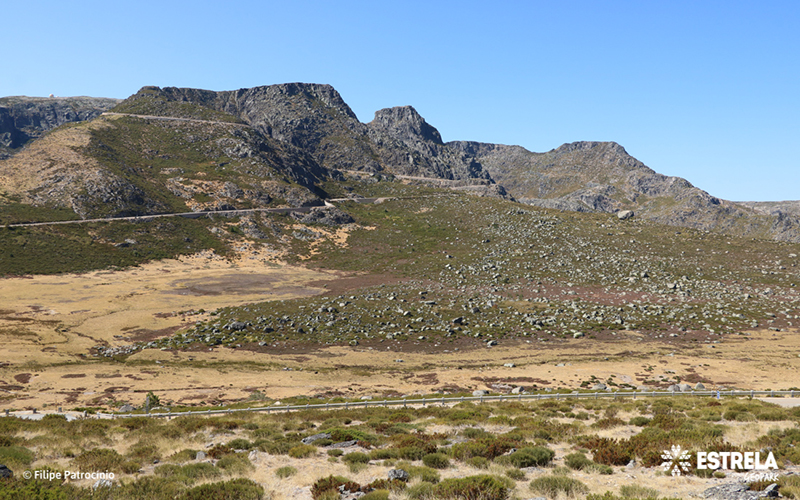Nave de Sto. António and Poio do Judeu
Share Image
-
Nave de Sto. António and Poio do Judeu
-
Centro
-
Manteigas
-
Serra da Estrela Nature Park
Identification and Access
-
No
-
Access coming from:
- Manteigas (12 km) – N338 and N 339.
- Covilhã (18 km) – N 339.
Park at GPS: 40.321951, -7.587747.
Nave de Sto. António GPS: 40.31972, -7.578889
Erratic block of Poio do Judeu GPS: 40.322802, -7.584453.
Base Characterization
-
On the background to the east, one can observe Poios Brancos - Alto da Pedrice plateau, an area that was not covered by the glacier. During the maximum of the glaciation, this plateau may have had a small permanent snow cover or even ice, although without movement, which does not allow classifying it as a glacier. It would probably be an area where it would snow less, which, combined with the west and northwest winds, would make it impossible to form a ice with large thickness.
Also to the east is Nave de Santo António, a flat area, very interesting for the glaciation study, as it has deposits of well-preserved moraines.
To the northwest, there is an excellent overview of the upstream sector of the Zêzere valley, the largest glacier valley in Estrela mountain.
In the background, one sees the “gate” of Lagoa Seca, with accumulations of moraines witnessing the ice thickness (300 m) that have occurred there. From the same phase is Poio do Judeu moraine at WSW. Note a huge 150 m3 erratic block (the biggest in Portugal), Poio do Judeu, given its name to the accumulation.
The view reveals several surfaces flattened and uneven by faults. The Zêzere valley develops in an extensive alignment, continuing to Alforfa river valley corresponding to the great fault of Vilariça. Along the slope are several grit deposits of crushed and altered rock, springs and smooth surfaces, phenomena denouncing this tectonic accident.
Erratic block – rock, sometimes quite large, that was moved by a glacier.
Moraine – rock accumulation deposited primarily by the direct action of a glacier.
-
National








